Submitted Review
Lawrence Pennington and Simon Hogan ‘Tjilpi Kutjarra (two old men)’
‘…forces of life that need to be honoured with gratitude and wonder.’
Stepping into the entrance annex to Raft artspace does it all- a set of four 650 x 550mm jewels on the left are open portals into a spatial mnemonic of country – Simon Hogan’s limited blood-red, ochre-white pallet, with a sprinkling of bioluminescent-blue on black ground, transports the mindful viewer. The works request a phenomenological reception, a sense of hovering over windows to vastness. The best of them quickly loosen any grip of surface depiction, as if by osmosis, drawing one into their worlds. Once free of earthly gravity and the mundane, the experience is more like witnessing the shimmering veils of a dancing aurora where one’s senses softly begin to thrill.
The small but signature Lawrence Pennington up front on the title wall marks the distinction between the two Spinifex artists – Lawrence’s sparer touch, here at once unerringly succinct and yet full voltage, is a great partnership with Simon’s swimming microstructures of porous matrix.
This is a gem of a show – one of the greats – I can’t get past the first few metres but you don’t need to go further to get a taste of what’s coming – a threshold that promises impressions of the unnameable and unseen from the desert interior – spinifex and sand country. Only now after 250 years have we settler Australians been enculturated deeply enough to glimpse what early explorers were blind to and interpreted as terra nullius or empty country. Here on display created by tjilpi kutjarra is an esoteric fullness and astounding vitality of the concept ‘country’.
For the 20th Anniversary of RAFT’s opening Dallas Gold has orchestrated another sublime hang, the two larger rooms left open so that as one enters there’s vista to all sides. From the limited pallet of the annex-entrance one enters a garden of sorts, here come the yellows and greens, oranges sing out, touches of purple from the hot to the cold appear. It’s not so much a garden of earthly delights as sound and light waves. Forgive the lyrical metaphors but somehow, it’s the only way to share experiences inexplicable in conventional terms.
Richer than a 360 panorama, it’s more a complex yet elegant Symphony springing up around you. Like being held in the nucleus of singing country, sound fields of vibrating matter suspended timeless at the speed of light. The gift of these paintings helps us to imagine a reflection of concepts like songlines and the Tjukurrpa’s eternal present. The experience of the exhibition though subtle, surrounds from all sides in frequencies strangely familiar, macro and micro, both organic and musical. We recognise the visceral correspondences – here’s Simon’s fascia and cellular networks of marrow and membrane, while Lawrence seems to conduct and evoke notes out of the void, sounding chords of country, arrangement to counter point, a musical score of semiotics that you can’t hear but by god you can feel.
This is the old people’s artistry, plotting paint on its haptic dance from a wellspring of knowledge, language and song. Part system of signs, part quantum, its language seems to reveal aspects of structure strewn with symbol, clues in a vast ecological-scape that is resonant with spiritual forces and the deeper mysteries of life.
Tjilpi Kutjara is a show that is scarcely open to rational analysis but rather prompts a recognition of our human smallness and elicits respect for deeper understandings and forces of life that need to be honoured with gratitude and wonder.
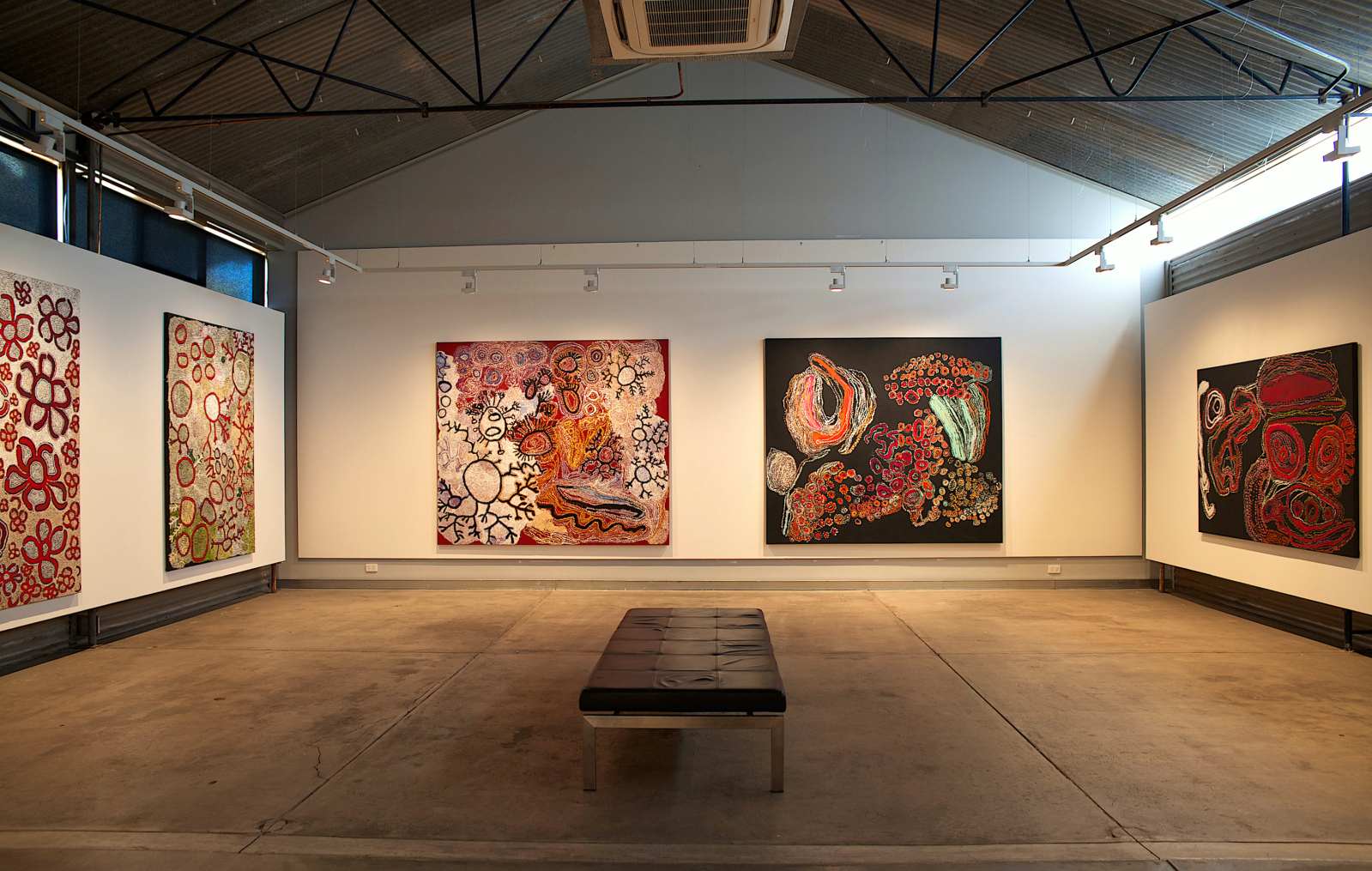
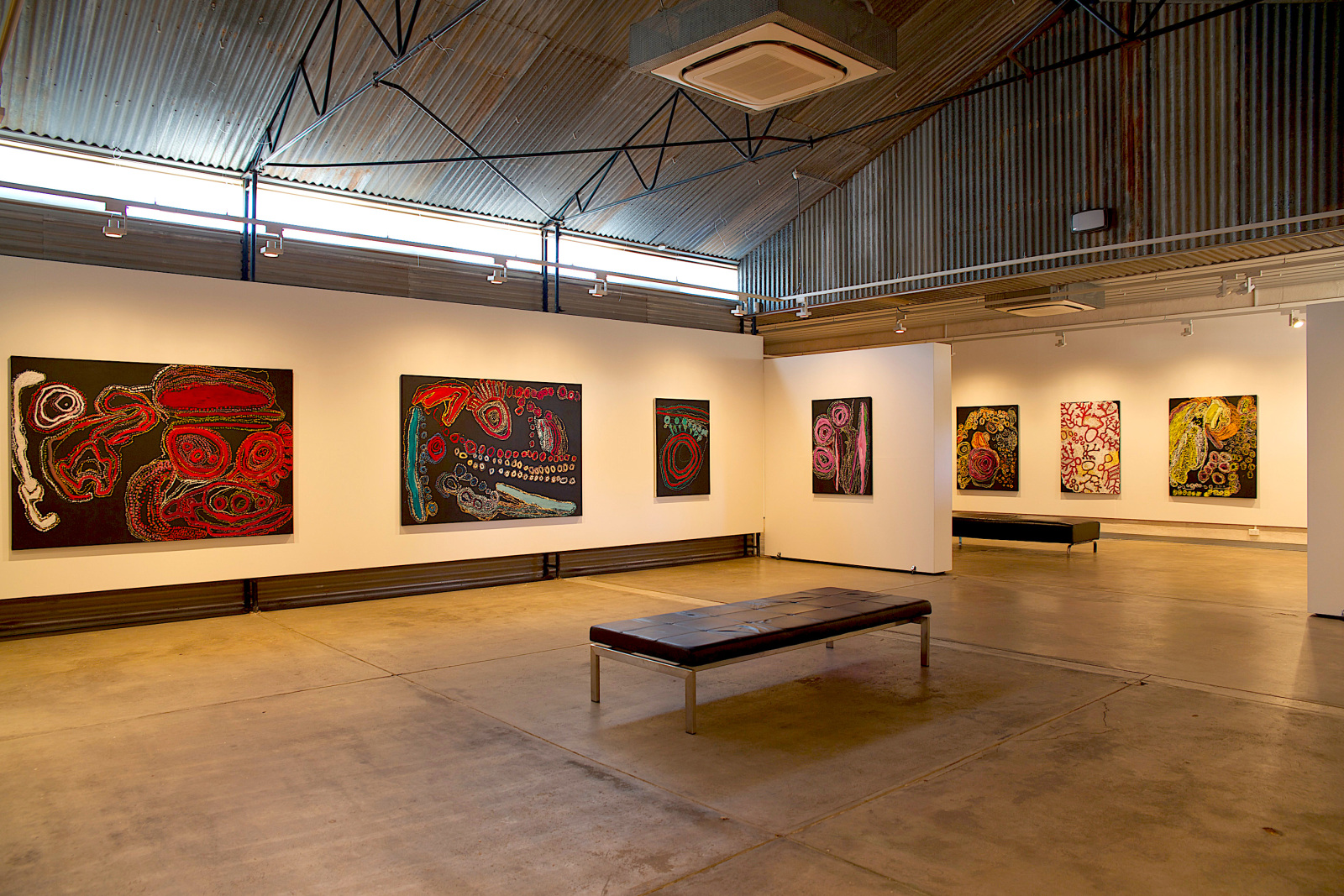


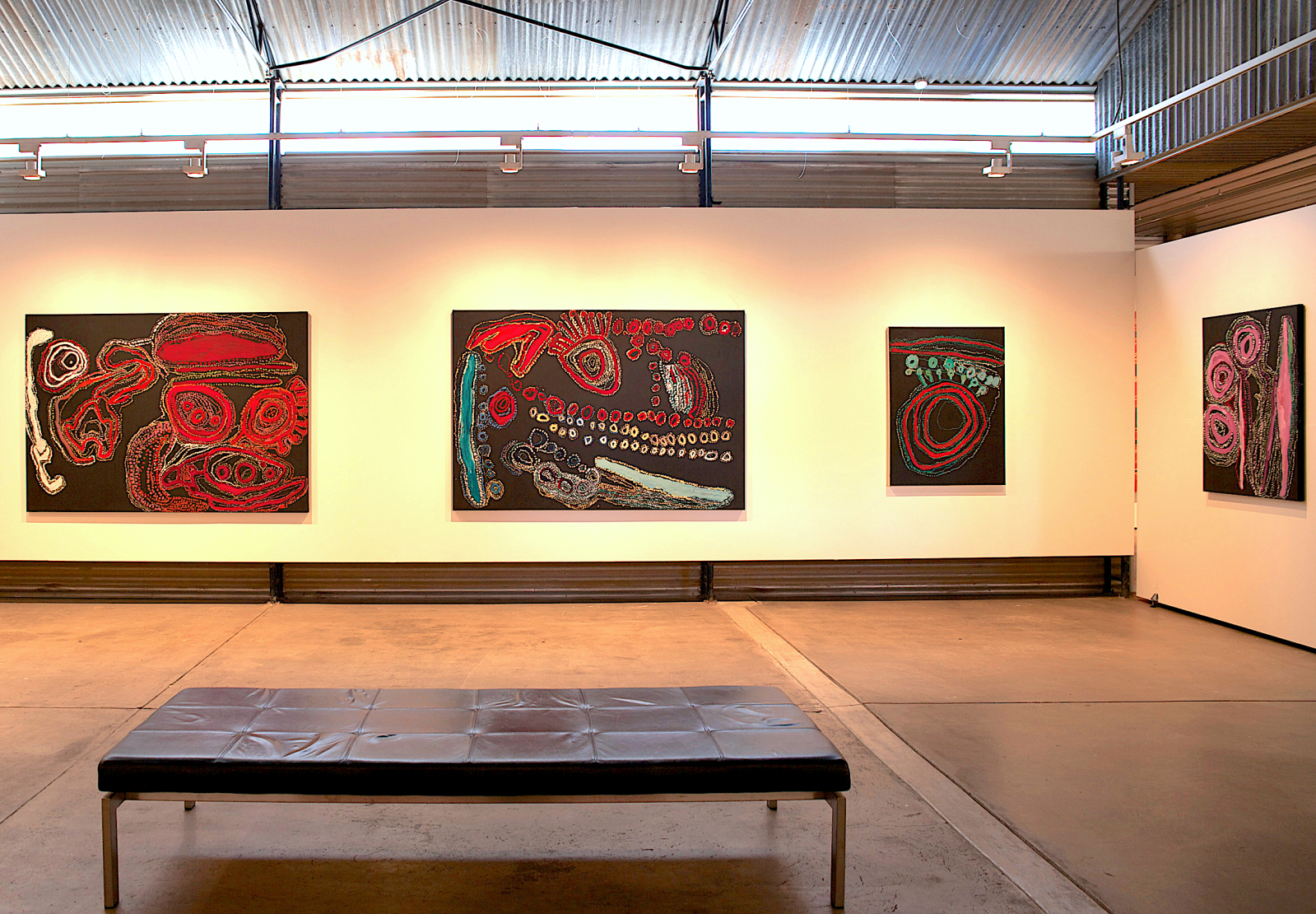

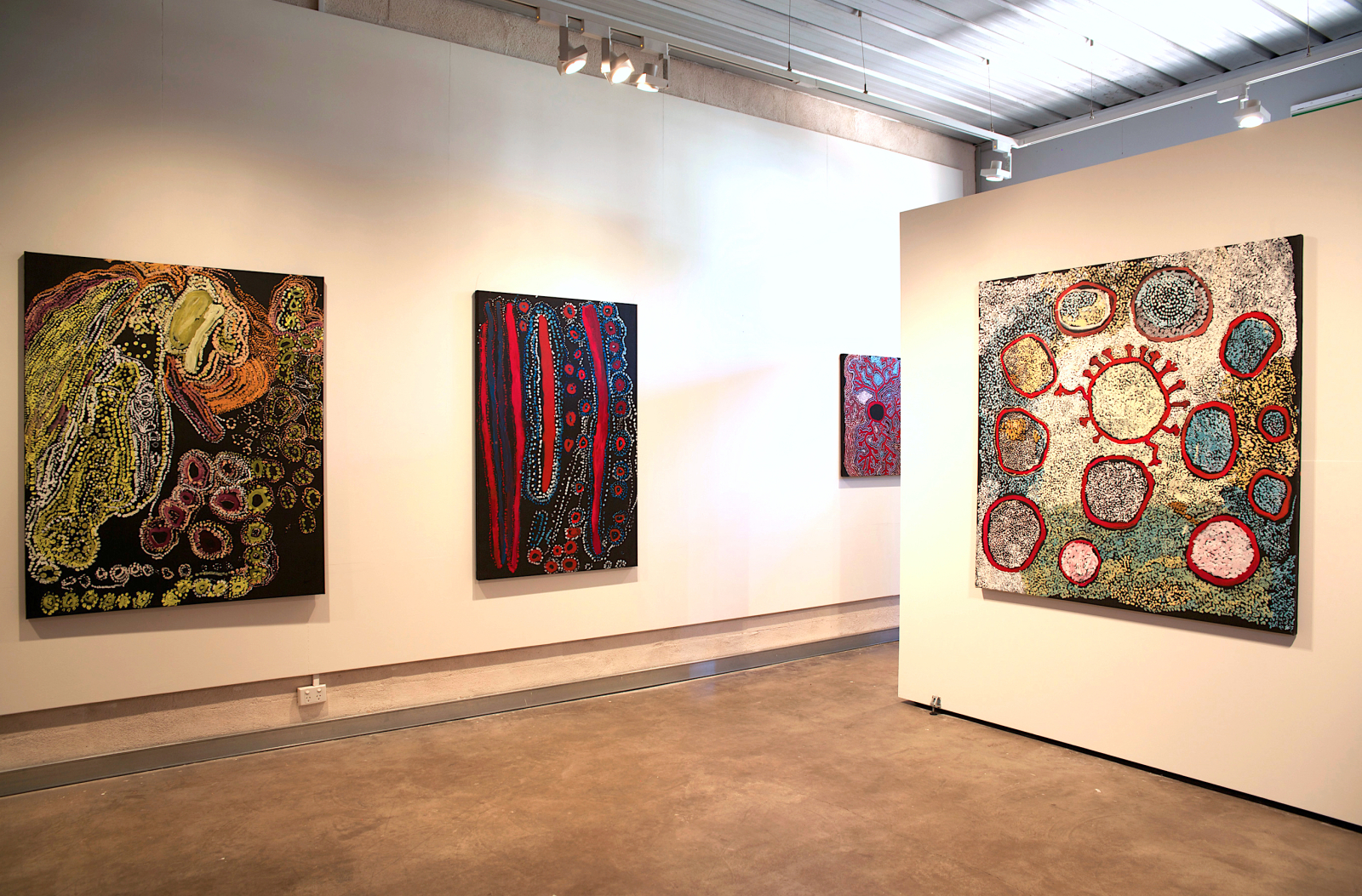
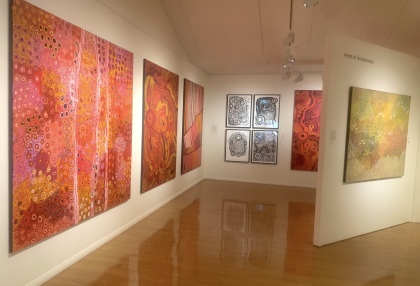
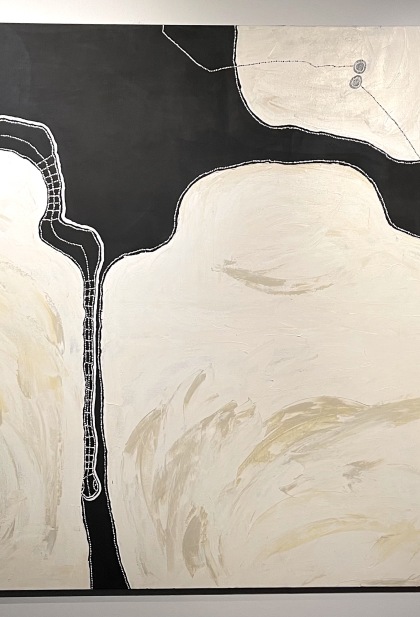
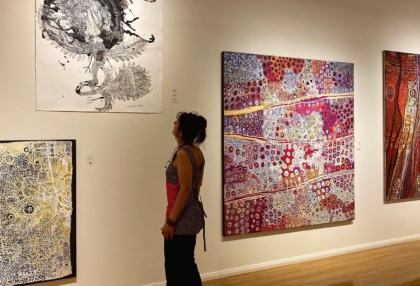
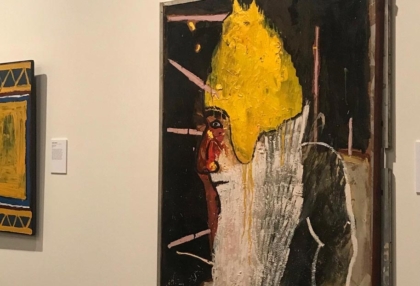
No Comments